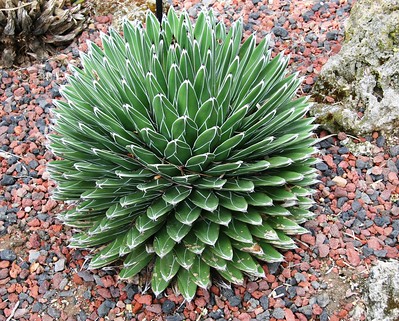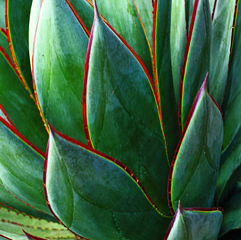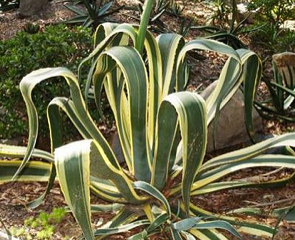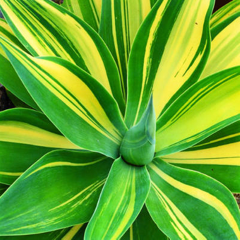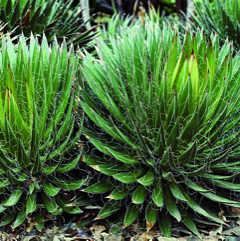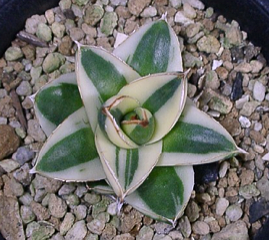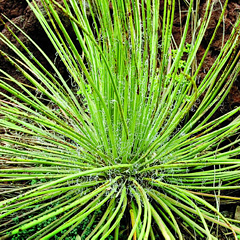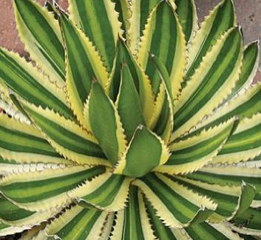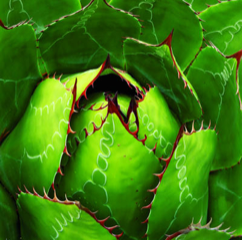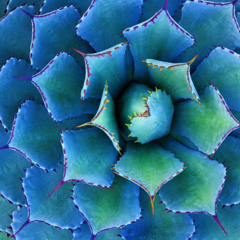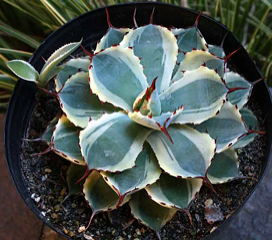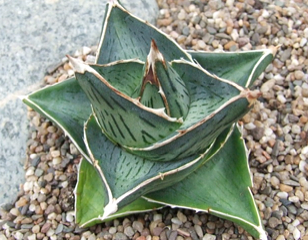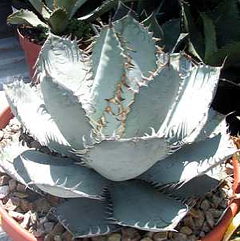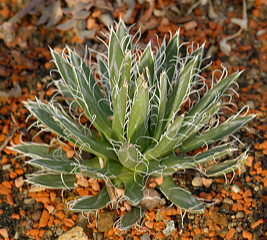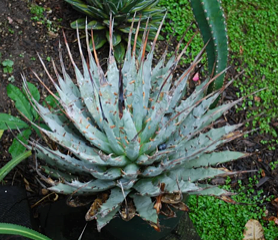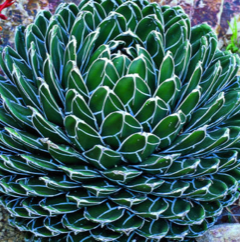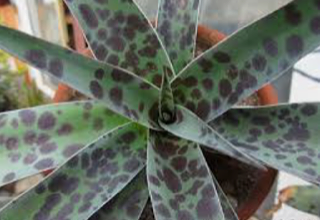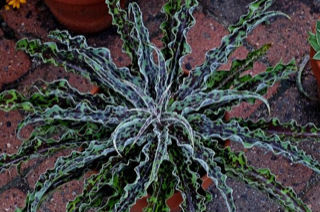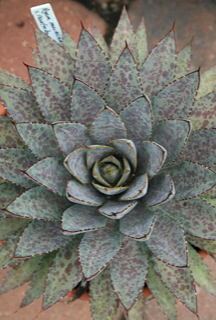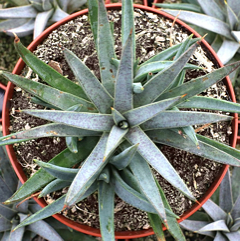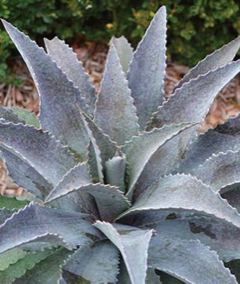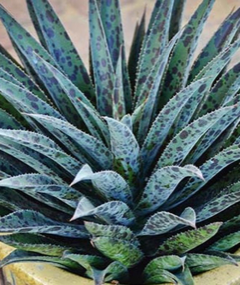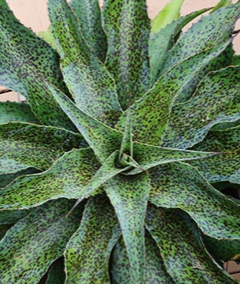Submitted by: Jim Tanner
The genus Agave is part of the family Agavaceae. There are around 200 species in the genus. Most of these are from Mexico, although they occur in the southern United States and into South America.
Plants are characterized by forming rosettes of fleshy (succulent) leaves which have a sharp point or spine terminally. The leaf margins may be smooth or spiny.
Agave plants have been given the common name “Century Plant” because of their blooming habit. The idea is that the plants live for 100 years, bloom and die. While it is true that Agave are monocarpic, meaning they bloom once and then die, few species, if any, take a full 100 years to do this. When an Agave does bloom, it sends up a large flower stalk out of the center of the plant that grows very quickly. The height of the bloom stalk is often many times higher than the plant. This often catches people by surprise when the Agave they were growing in their garden for years, suddenly and rapidly goes through this transformation. This is often when they try to identify and learn more about their plant.
Because of the fleshy green succulent leaves and the sharp points, many people try to look up cactus or cacti when in fact it is an Agave they are searching for.
Manfreda was a genus of flowering plants in the family Asparagaceae, subfamily Agavoideae. Along with Polianthes, members are commonly called tuberoses. The generic name honors 14th-century Italian writer Manfredus de Monte Imperiale. All species are now placed in Agave.
Like other species of Agave, former Manfreda species have rosettes of leaves branching from a very short stem, and flowers at the end of a long stalk. The flowers are tubular and whitish, yellow, green, or brownish, with lengthy stamens.
× Mangave is an intergeneric hybrid created by cross-breeding Agave and Manfreda. Mangave is often employed as an ornamental plant in dry environments, as the hybrid possesses traits of durability found in both Agave and Manfreda.
LATIN LOOKUP – Loquerisne Latine (Do you speak Latin)?
The meanings of latin plant names on this page – from http://davesgarden.com/guides/botanary/
- Agave [a-GAH-vee]
Noble, handsome. - americana [a-mer-ih-KAY-na, a-mer-ih-KAH-na]
Of the Americas. - attenuata [at-ten-yoo-AY-tuh]
Thin, weak. - compacta [kom-PAK-tuh]
Compact. - filifera [fil-LIF-er-uh]
Thread-bearing. - geminiflora [jem-in-ih-FLOR-uh]
Having twin or several flowers. - lophantha [low-FAN-tha]
Crested flower. - maculosa [mak-yoo-LOH-suh]
Spotted. - Manfreda [MAN-fred-ah, man-FRED-ah]
Named for 14th century Italian botanist and medical writer Manfredus de Monte Imperiale. - marginata [mar-jen-AY-tuh, mar-jeh-NAH-tuh]
Margined. - montana [MON-tah-nuh, mon-TAY-nuh]
Of the mountains. - potatorum [poh-tuh-TOR-um]
Of drinkers; referring to a plant’s use in brewing beer. - pumila [POO-mil-uh]
Small, dwarf. - titanota [ty-tan-OH-tuh]
From the Greek titanos (lime, chalk or gypsum); for the white leaves. - toumeyana [too-mee-AY-na]
Named for James William Toumey, early 19th century American forester and botanist. - undulata [un-dew-LAY-tuh]
Wavy. - utahensis [yoo-tah-EN-sis]
Of or from Utah (U.S.).
